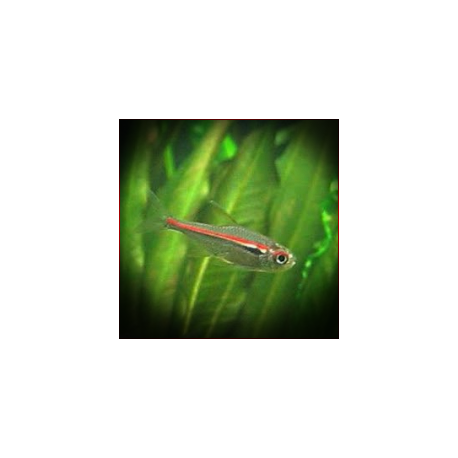More info
Datasheet
| Maximum Size | 3.0cm / 1.18inches |
General Description
Hyphessobrycon acaciae, a member of the Characidae family under the classification order Characiformes, is characterized by a dark lateral band, distinguishing it from other species in the Río Orinoco basin. Notable features include the presence of four simple anal-fin rays, 14 teeth in the dentary, and specific scale numbers between the lateral line and pelvic fins. This species lacks bony hooks on the fins of sexually mature males, which is a distinguishing factor from related species.
Aquarium Setup
The proper setup for H. acaciae involves maintaining a well-filtered aquarium of moderate size, preferable with live plants for natural hiding spots. Water conditions should mirror their native habitats, with a temperature range between 22-26°C (71.6-78.8°F), a pH level of 5.0-7.5, and soft to moderately hard water (see table).
Behaviour
Known for their peaceful demeanor, H. acaciae are schooling fish that thrive in groups of six or more. They are active swimmers and tend to occupy the middle and upper levels of the aquarium. Compatibility with other non-aggressive fish is advisable to prevent stress.
Feeding and Diet
These tetras are omnivorous, accepting a wide range of foods in captivity. A balanced diet should consist of high-quality flake food, freeze-dried bloodworms, brine shrimp, and micro pellets. Feeding them small portions multiple times a day helps mimic their natural grazing behavior.
Reproduction & Dimorphism
Breeding H. acaciae in captivity can be stimulated by soft, slightly acidic water and the presence of fine-leaved plants for egg scattering. The females are typically rounder-bodied compared to the slimmer males. During courtship, males display more vibrant coloration to attract females.
Habitat and Distribution
These tetras are endemic to streams and minor affluents within the middle-and-upper Río Guamal in Meta Department, Colombia. The Río Guamal and its tributaries form part of the larger Río Meta system, eventually flowing into the extensive Río Orinoco. The species was first identified near Puerto López, Colombia, specifically at the 'Morichal del estero' locality.

